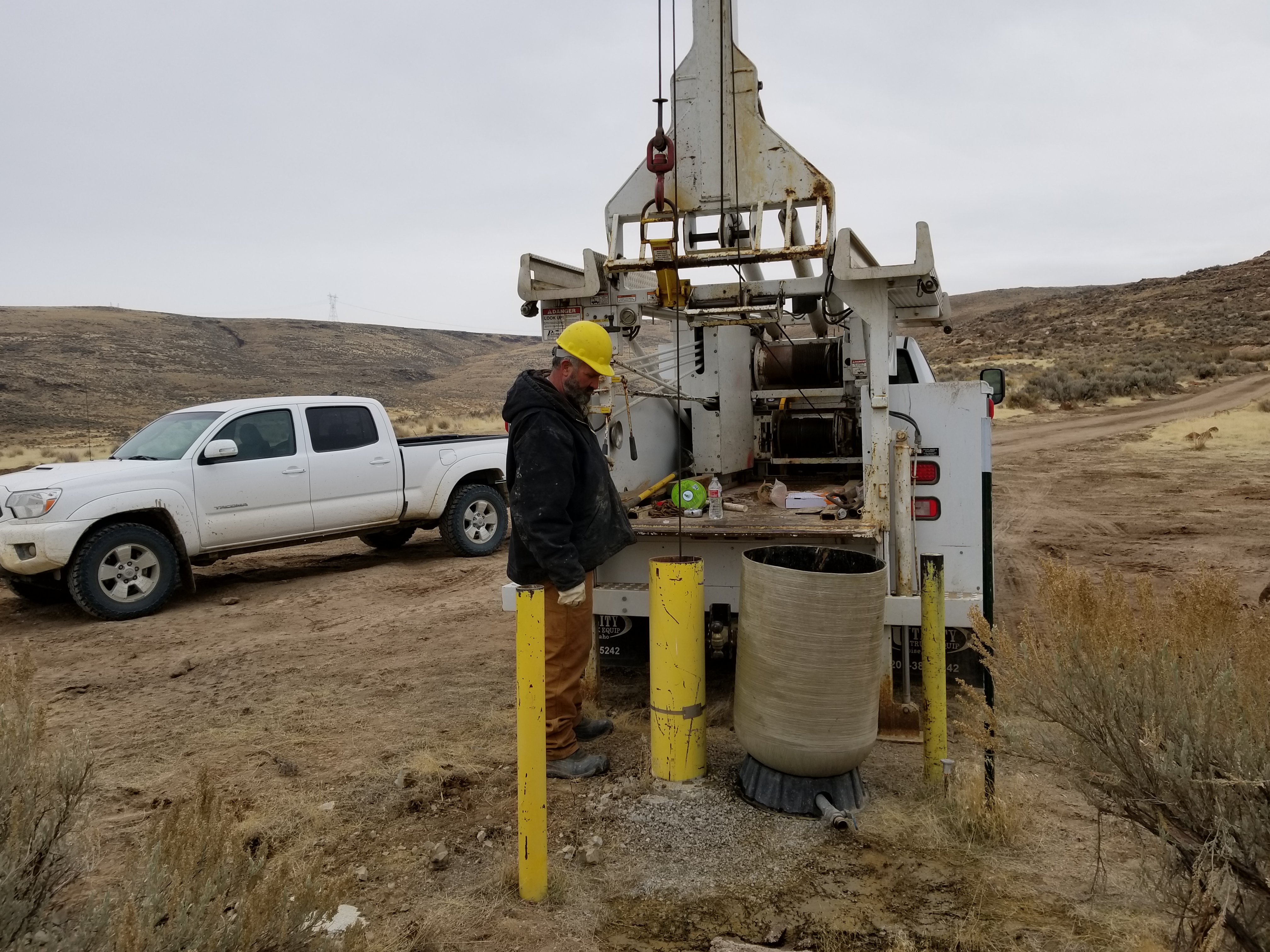Project Overview
Summary of Essential Project Details
The Grassy Mountain Gold Project is located in Malheur County, eastern Oregon, approximately 22 miles south of Vale, Oregon, and roughly 70 miles west of Boise, Idaho. The project site is situated in the rolling hills of the high desert region of the far western Snake River Plain and consists of three patented (private) lode claims where the deposit is located, 455 unpatented lode claims, nine mill site claims, and a lease for land surface and surface/mineral rights, all totaling approximately 8,280 acres. The local terrain is gentle to moderate, with elevations ranging from 3,300 to 4,300 ft. above mean sea level. Paramount owns 100% of the private land on which the gold deposit sits and controls all mining claims within the 8,200 acres land package.
Since the acquisition of Calico Resources in 2016, the goal of the Paramount team was to advance the high-grade Grassy Mountain Gold project towards production, becoming Oregon’s first modern-day gold mine.
Paramount has improved the size of and confidence level in the project’s mineral resources, metallurgical recoveries and project economics. The project has received the County permit and is progressing through State and Federal permitting.
Grassy Mountain Gold proposes to mine approximately 2.07 million short tons (US) (Mst) of mill-grade ore and 0.27 Mst of waste rock for a mine life of approximately eight years; however, the TSF has been sized to contain 3.64 Mst should additional reserves be identified. The material (both ore and waste) will be extracted from an underground mine using conventional underground mining techniques, including drilling, blasting, mucking, loading, and hauling.
Grassy Mountain Gold will use hydraulic loaders to load the ore and waste into haul trucks. The haul trucks will transport the waste rock to the Temporary Waste Rock Storage Facility (TWRSF) near the TSF, and will transport the ore to the Run of Mine (ROM) ore stockpile adjacent to the crushing and milling facilities. The ore will be crushed and leached in a carbon-in-leach (CIL) processing plant at a rate of 750 stpd (short tons per day), seven days per week. The leached tailings will go through a detoxification process, then pumped in a slurry to the TSF with supernatant solution recovered and pumped back to the mill.
In general, the proposed mining and metal processing operations will consist of an underground mine and ore processing facilities, including a conventional mill and TSF, a TWRSF, and other support facilities.
The Project will include the following major components:
- An underground mine, with mine portal, decline, and ventilation shaft
- TSF with tailings embankment, tailings impoundment, and reclaim pond
- TWRSF
- Process Plant Area, which includes the process plant building, control room, crushing facilities, conveyors, ore bins, control rooms, CIL processing plant, reagent storage building (including chemical and reagent storage), gold room, and collection pond
- Infrastructure and ancillary facilities that include project site main gate and guard house, administration office and change house, assay laboratory and sample preparation area, truck shop and warehouse, wash pads, process plant workshop and warehouse, meteorological station, explosive magazines, parking areas, ore stockpiles, solid and liquid hazardous waste storage, and fuel storage and dispensing area
- Roads, including upgrades to the Twin Springs and Cow Hollow roads, and construction of the mine access, internal access, and mine haul roads
- Yards and laydown areas
- Growth media stockpiles
- Water supply, including production well field, water pipeline, raw water storage tank
- Potable water treatment plant
- Power supply that includes a power substation, upgraded 14.4 kilovolt (kV) overland power transmission system, new 14.4 kV overland power transmission system, onsite powerlines, and generators
- Permanent and temporary stormwater diversion channels
- Other areas, including the exploration areas, septic system, and perimeter fence
- Quarry
- Reclamation borrow areas

Project Timeline
THE GRASSY MOUNTAIN GOLD KEY PROJECT MILESTONES AND TIMELINE
| Significant Milestones | Expected Timeframe | Status |
| Final EIS | January 23, 2026 | On track |
| Federal Record of Decision | Q4 2025 | January 23, 2026 |
| Issuance of State Final Permits | Q1/Q2 2026 | Pending |
| Construction Start | Q3/Q4 2026 | Planned |
| Transition to Production | Q4 2027 | Planned |
| Construction Completion – Start of Production | Q1 2028 | Planned |
